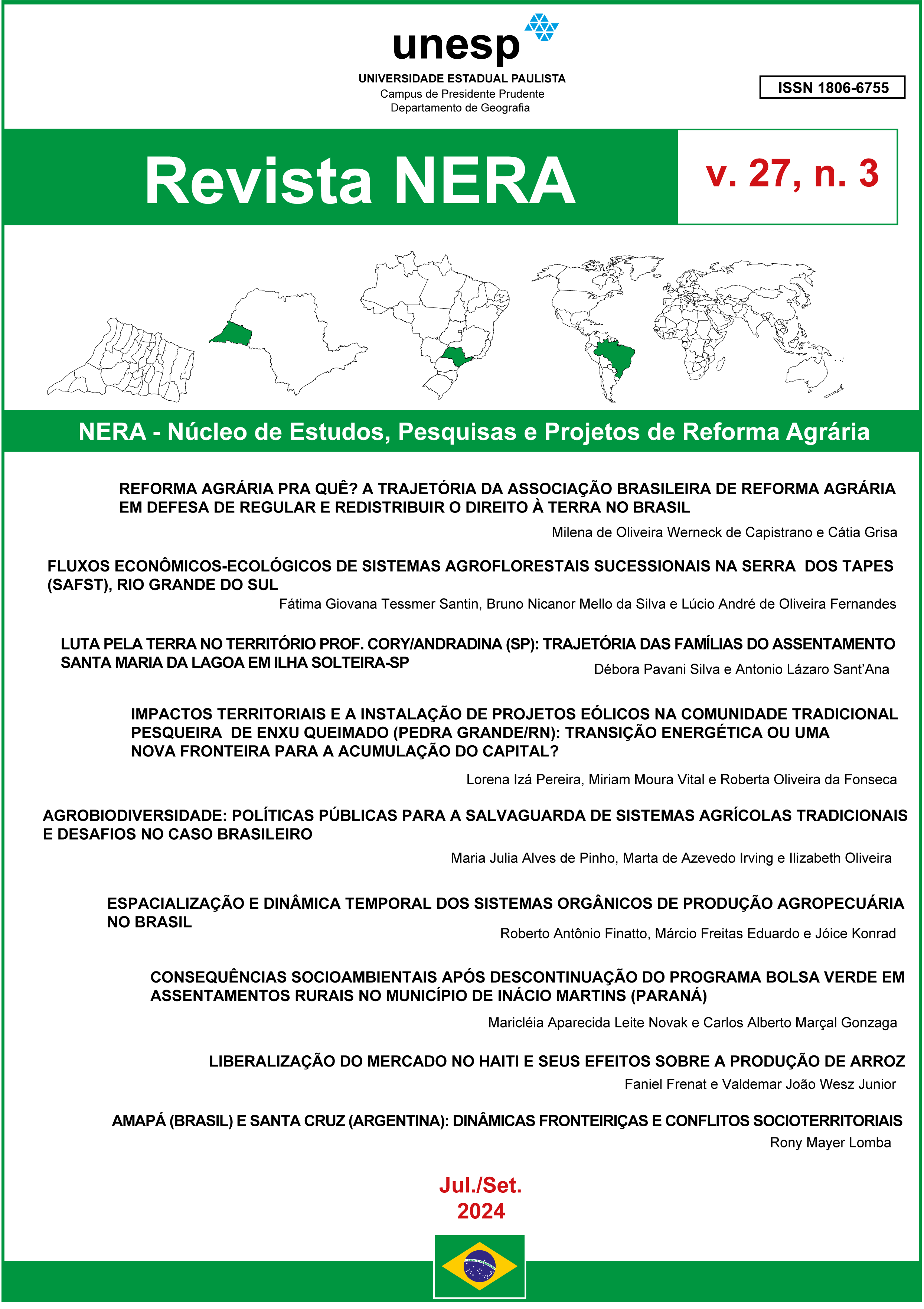The spatialization and features of organic production in Brazil
DOI:
https://doi.org/10.47946/rnera.v27i3.10368Keywords:
Organic agriculture, Agroecology, Territorial development, Agrarian GeographyAbstract
Organic agriculture and livestock production systems have been gaining more and more space in the countryside and on the market. This is a result of the need for alternatives to conventional agriculture and cattle production, which is characterized, among other aspects, by its high environmental impact. Thus, in recent decades, the private sector, public institutions and civil society (popular social movements, NGOs, associations, collectives, among others) have begun to develop production systems strongly supported by ecological principles. Therefore, this article aims to identify and analyze the characterization of organic production in the country, with emphasis on its evolution and spatialization. This is an exploratory study that aims to reveal the distribution of organic production in the territory. The research was performed based on literature review and analysis of data from the National Register of Organic Producers (Cadastro Nacional de Produtores Orgânicos – CNPO), provided by the Ministry of Agriculture and Livestock (Ministério da Agricultura e Pecuária – MAPA). Organic production, in the last ten years, has shown an increase of almost 400%, with audit certification predominating among organic conformity assessment mechanisms. The South, Northeast and North regions, in 2023, had the largest number of producers. Despite the progress, the Covid-19 pandemic and the recent disruption of public policies for the sector have impacted the trends previously identified in the Brazilian organic production scenario.
Downloads
Downloads
Published
How to Cite
Issue
Section
License
Copyright (c) 2024 REVISTA NERA

This work is licensed under a Creative Commons Attribution 4.0 International License.
Os artigos publicados na Revista NERA devem seguir, obrigatoriamente, as diretrizes sobre ética e integridade na prática científica do Conselho Nacional de Desenvolvimento Científico e Tecnológico (CNPQ), disponíveis em seu sitio na internet (http://memoria.cnpq.br/normas/lei_po_085_11.htm). Em caso de infração às referidas diretrizes por qualquer texto publicado, o artigo será formalmente retirado de publicação, conforme a prática da comunidade científica internacional. A submissão de qualquer texto à Revista NERA implica na aceitação plena deste procedimento. As ideias e conceitos emitidos nos artigos são de inteira responsabilidade dos autores. Reforçamos que após a publicação do artigo o mesmo não será despublicado caso haja solicitação por parte dos(as) autores(as).
Lembramos que todos os manuscritos submetidos à Revista NERA são vereficados no software de similaridade "iThenticate". Os manuscritos com plágio verificado são automaticamente negados e os(as) autores(as) comunicados.
A licença utilizada pela Revista NERA é Creative Commons - Atribuição 4.0 Internacional (CCBY 4.0).
A política de arquivamento é a Licença LOCKSS.



















